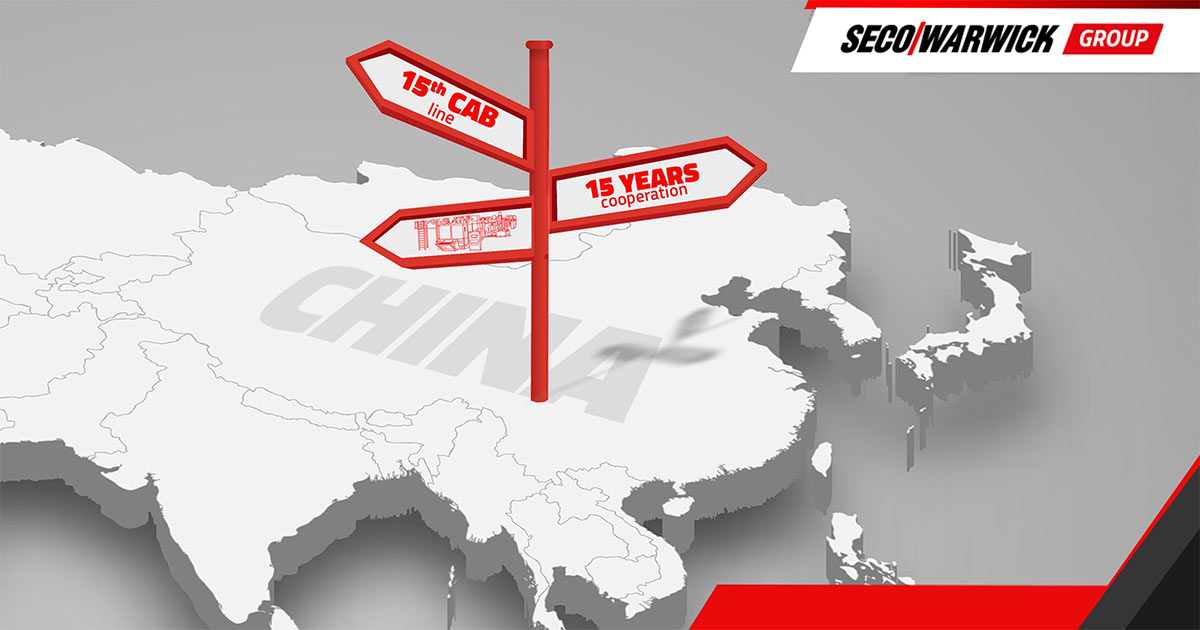The plant producing highly advanced fasteners for the largest manufacturers in the aerospace industry, operating since the middle of the last century, ordered a Vector® vacuum furnace from SECO/WARWICK. The furnace will be delivered in a standard configuration and will meet the global aviation industry’s highest requirements.
The machine will process self-locking nuts, nut plates, barrel nuts, stud nuts, spline nuts, clamp nuts, as well as a wide range of washers and flanges. The Italian Partner is an innovator in the field of comprehensive fastening solutions. The Vector furnace will become part of a modern production plant, increasing not only its efficiency, but also guaranteeing thermally treated fasteners of the highest quality.
Aerospace fasteners perfected in the Vector furnace
The furnace on order is a standard solution perfectly suited to aviation industry needs. Thanks to a very refined design without any additional modifications, the furnace will perform at high operating temperatures, up to 1300oC.
“This is SECO/WARWICK’s first contract with this Client. Our Vector furnace is perfectly suited to meet the fastener heat treatment challenges, while meeting all required aviation standards. The heating process for these materials require extraordinary purity, which is why the presence of two gases is important: argon — used for partial pressure, and nitrogen — used mainly in the cooling process. The customer required a very short cooling cycle, which is achieved with a 15 bar abs gas blower. These are the Vector vacuum furnace standard features. Due to the fact that we did not have to adapt it to the Italian manufacturer’s needs, it was also an economically beneficial purchase,” says Maciej Korecki, Vice President of the Vacuum Furnace Segment at SECO/WARWICK.
The furnace on order is equipped with a dew point sensor for each of the gases. It is a system solving one of heat treatment’s very critical requirements, which is to control the quality/purity of the gas used during the process. Vector also features a partial pressure control system which helps prevent evaporation and sublimation of alloying elements from the load surface during the vacuum heat treatment.
Aviation requires precision heat treatment
The aviation industry expects finished parts of the highest quality. This is understandable, because in this area, the safety of human life depends on even the smallest component. Aviation boasts the lowest accident rate, and this is a direct result of implementing a number of quality standards and procedures. The AMS2750 standard was established in 1980 for the heat treatment of components for aircraft. Its main purpose is to better define pyrometry specifications. The AMS2750 standard includes guidelines for thermocouples, controllers and recording equipment, as well as strict temperature specifications for furnaces and equipment for the manufacture of aerospace components. The latest version, the AMS 2750G, was published in 2020. SECO/WARWICK supplies built-from-scratch vacuum furnaces which meet the standards set by the AMS2750G.
The vacuum furnace from SECO/WARWICK will not only allow the user to fully control the production process, the systems will guarantee high quality and continuity of the finished work.
VACUUM AS AN ECO FURNACE’S ATMOSPHERE
Vacuum furnaces use vacuum (vacuum created by air evacuation) as the protective atmosphere for the heat-treated part surfaces. The vacuum furnace’s main advantage is their versatility and the ability to carry out processes traditionally carried out in atmospheric furnaces. Differences in the vacuum furnace construction as well as the method of conducting the processes minimizes both media consumption and emissions to the environment, making the vacuum furnace itself a SECO/ECO solution when compared to traditional atmosphere furnaces.
Vacuum heat treatment’s eco-friendly features include:
/ perfect part surface quality (without additional operations),
/ no intercrystalline oxidation (no additional mechanical treatment),
/ no need to use protective gases (lower costs and emissions),
/ minimal consumption of process gases (cost savings),
/ minimum time for atmosphere preparation and conditioning (saving time and costs),
/ zero startup and shutdown time, work on demand (saving time, costs),
/ no open flame, no risk of fire or explosion (safety),
/ clean process, no part washing required (reduced environmental pollution),
/ low heat and by-product emissions (limited global warming effect),
/ environmentally friendly (zero pollution),
/ zero CO2 emissions (carbon footprint reduction).




